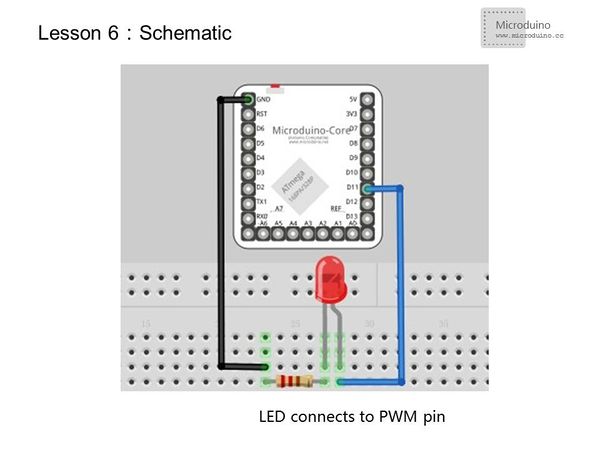“Lesson 6--Microduino "Breathing Light"”的版本间的差异
| 第1行: | 第1行: | ||
| − | {{Language| | + | {{Language|第六课--程序PWM控制LED亮度--呼吸灯}} |
{| style="width: 800px;" | {| style="width: 800px;" | ||
|- | |- | ||
2014年9月11日 (四) 13:48的版本
| Language | English |
|---|
ObjectiveThe last two experiment uses the external device to generate PWM to control the LED, how to control the LED by program instead of the external device? This lesson will give you an example. This experiment implemented an led fadein dimming, named breathing lamp. Equipment
Experimental schematicUsing high level lighting, the output also need connect to Microduino's PWM I/O port. If use the low level lighting, it has the same result. Programint ledPin=11;//D3、D5、D6、D9、D10、D11 is Microduino PWM I/O output port
void setup()
{
}
void loop()
{
for(int fadeValue=0;fadeValue<=255;fadeValue+=5)
//Increase PWM value, control the LED brightness by adjusting the value of fadeValue.
{
analogWrite(ledPin,fadeValue); //Write the brightness value to LED.
delay(30); //Keep the current brightness 30ms.
}
for(int fadeValue=255;fadeValue>=0;fadeValue-=5)
//Decrease PWM value,control the LED brightness by adjusting the value of fadeValue.
{
analogWrite(ledPin,fadeValue); //Write the brightness value to LED.
delay(30); //Keep the current brightness 30ms.
}
}
Program uses the loop statement, it's convenient to automatically control the brightness of the leds. ResultLED lights from off to on softly then off, followed by cycle. Video |
